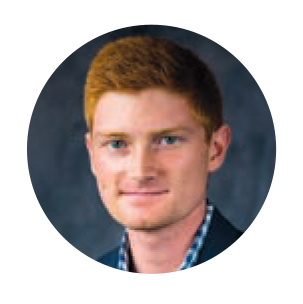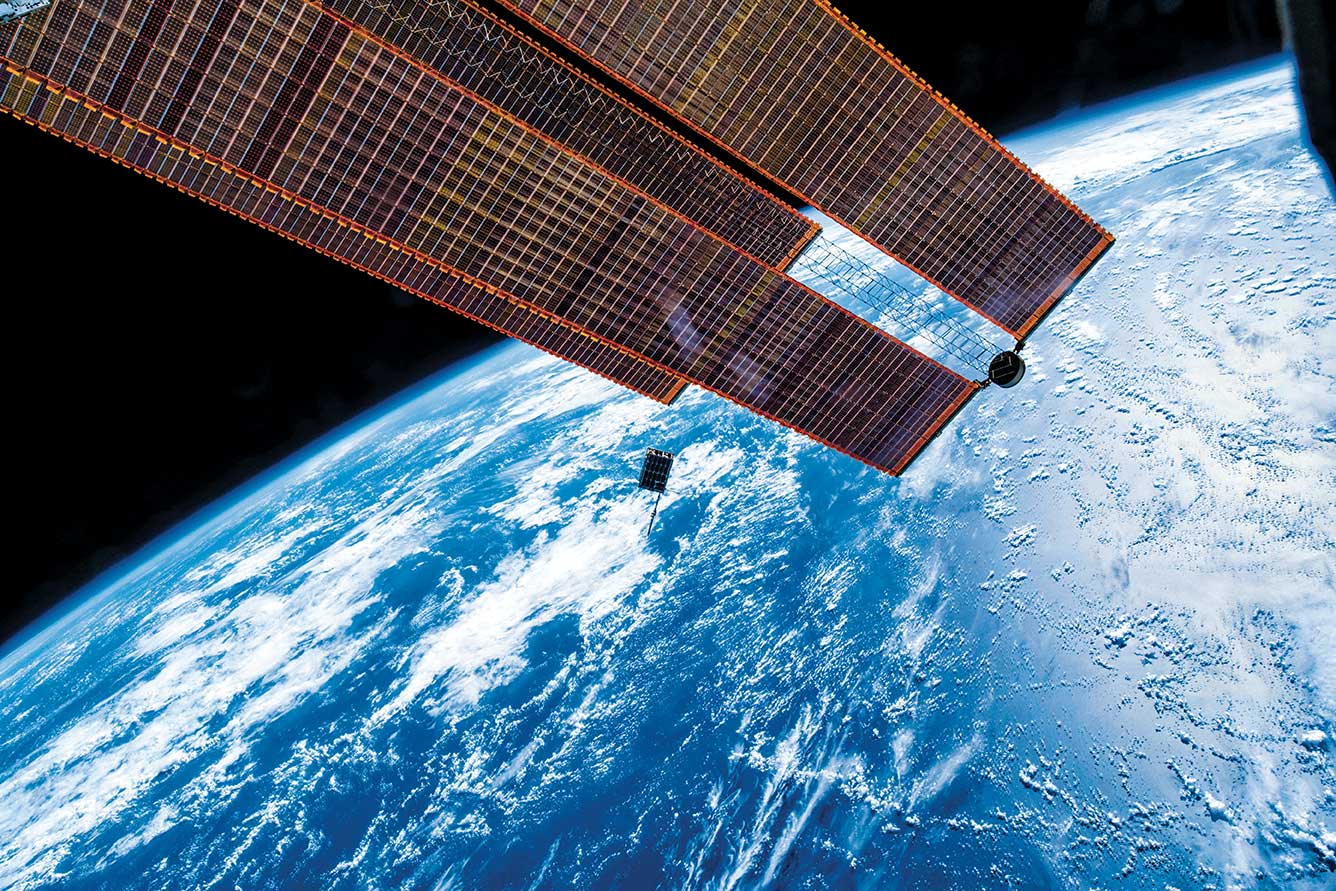Just one year after getting off the ground, Villanova’s CubeSat Club is already reaching for the stars. This past fall, the fledgling student group built and installed a Lindenblad antenna—a fairly simple but effective omnidirectional antenna—on the roof of Tolentine Hall. With it, the club can pick up signals from any of thousands of satellites currently in low earth orbit, including the International Space Station.
The club’s long-term goal involves a bigger leap: to design, build and launch an actual CubeSat—a 10-by-10-by-10-centimeter, lightweight nanosatellite that can be launched from a rocket, or put into orbit by astronauts on the ISS. But with design, equipment, programming, testing, and launch, CubeSat development can take several years and cost up to $100,000.
For now, club members are taking smaller steps towards their ultimate mission as they gain hands-on experience with satellite technology through a CubeSat simulator developed by faculty adviser Alan Johnston, PhD, associate teaching professor of Electrical and Computer Engineering. The low-cost simulator functions like a real CubeSat, with working solar panels and the capability to send telemetry to an antenna, making it an ideal learning tool.
Monitoring its Lindenblad antenna will keep Villanova’s CubeSat Club busy. First, they will design a payload to be launched into the stratosphere via a high-altitude balloon. If all goes well, the balloon’s telemetry will be detectable from the roof of Tolentine as it sails above Villanova. Also on tap is working with a project called AmbaSat-1: to program, launch and track a credit card-sized “sprite” satellite into low earth orbit.
It’s an ambitious agenda, but the club has the talent to succeed with members from many majors, including Engineering, Math, Physics, Astrophysics and Business. Dawson Duckworth ’21 COE, the club’s president, is optimistic: “Because there are so many ways to approach a solution, having different people from different majors makes a huge difference.”
My presentation at the @AMSAT 37th Space Symposium "A Year with the AMSAT CubeSat Simulator: 12 Months in the Classroom and Lab" that I presented with @Pat_Kilroy last week in Arlington, VA https://t.co/8ytonDXW5v #AMSAT #CubeSatSim #hamradio #CubeSat #STEM pic.twitter.com/0fiFiU56LM
— Alan B. Johnston, PhD (@alanbjohnston) October 22, 2019

“
Because there are so many ways to approach a solution, having different people from different majors makes a huge difference.”
Dawson Duckworth ’21 COE
